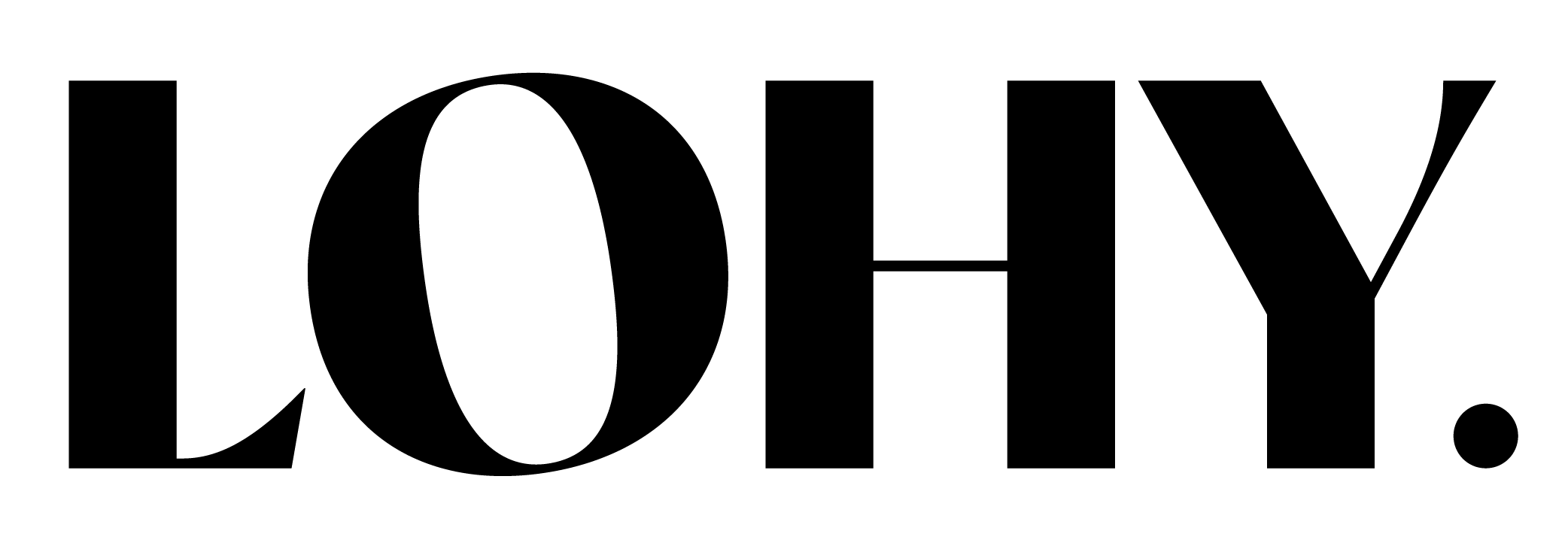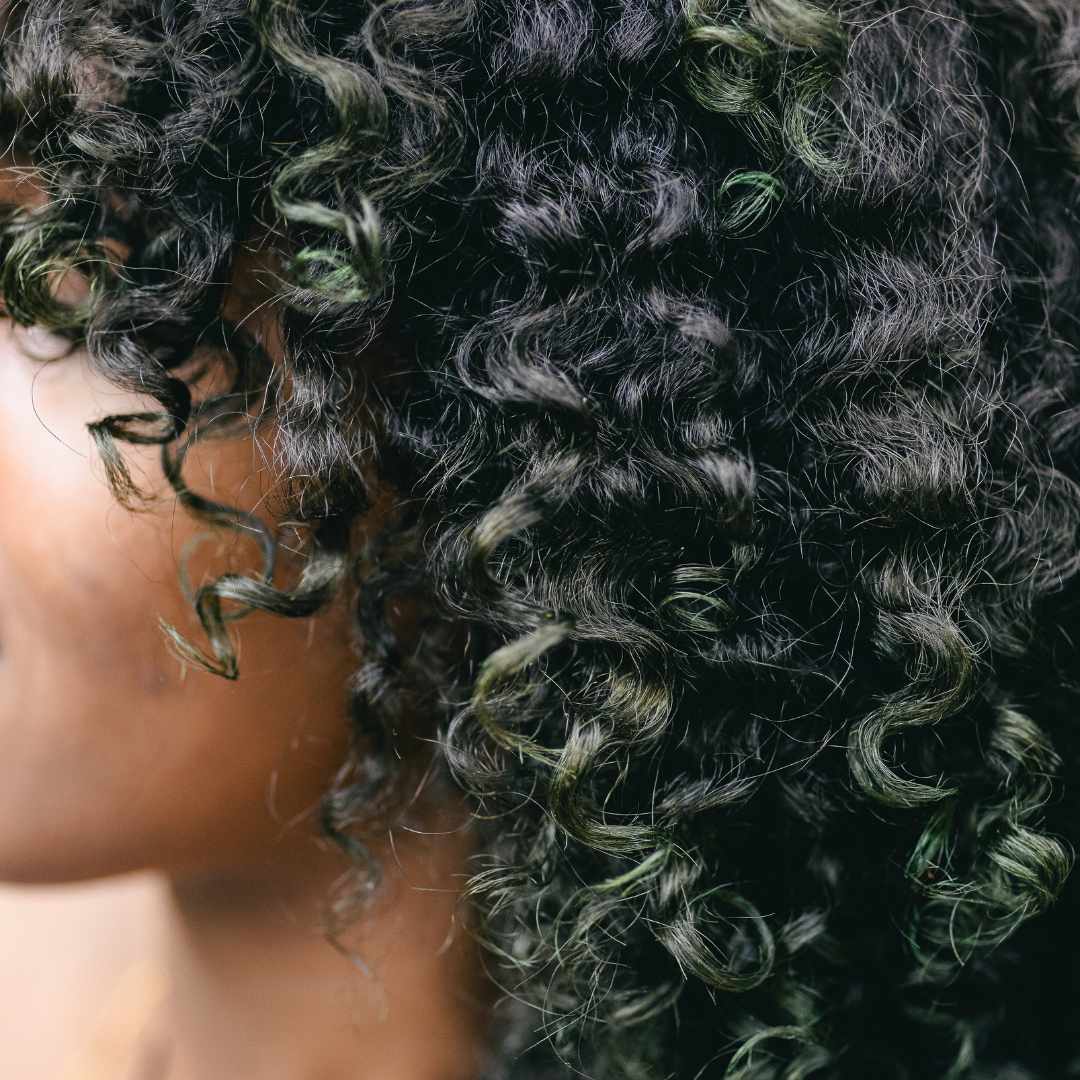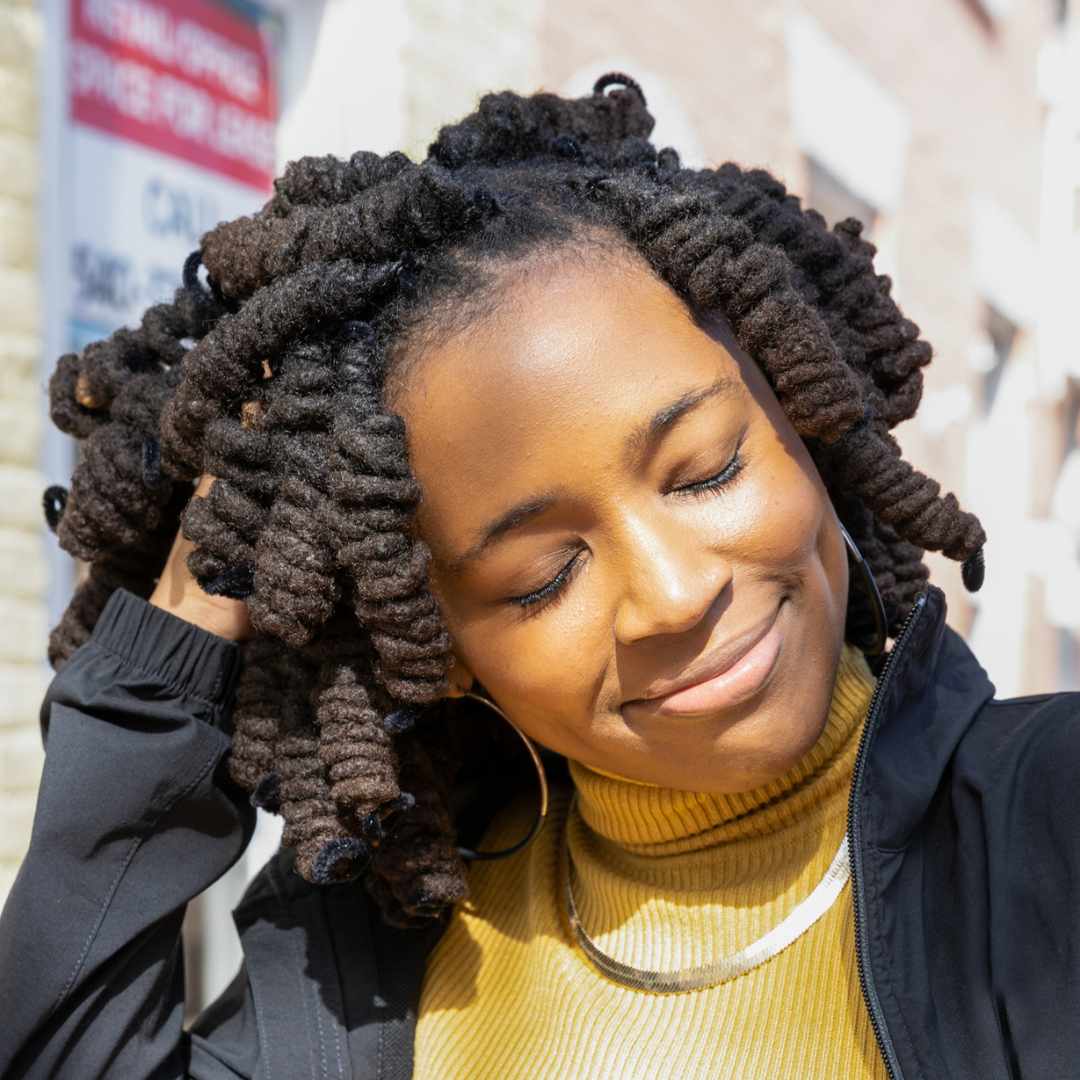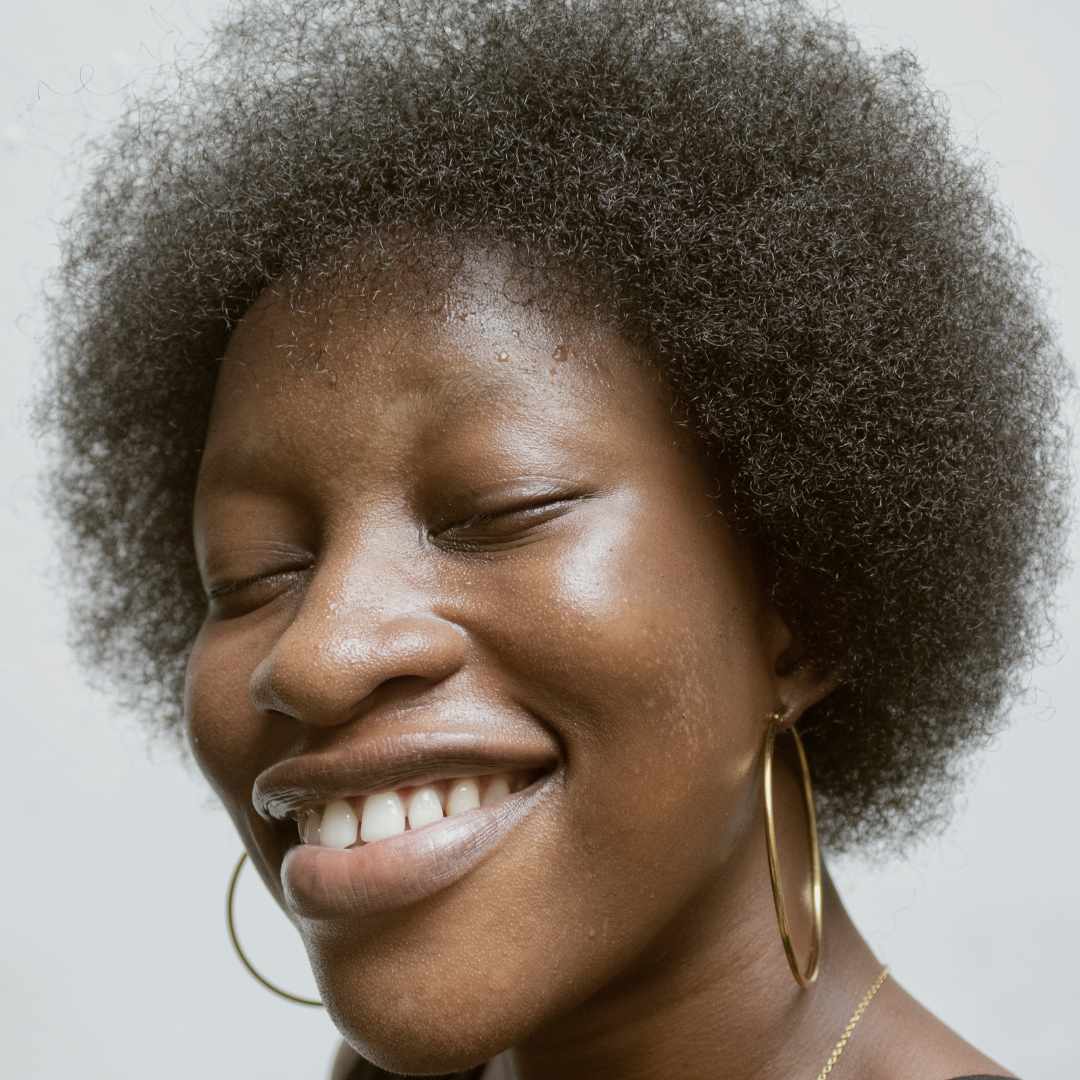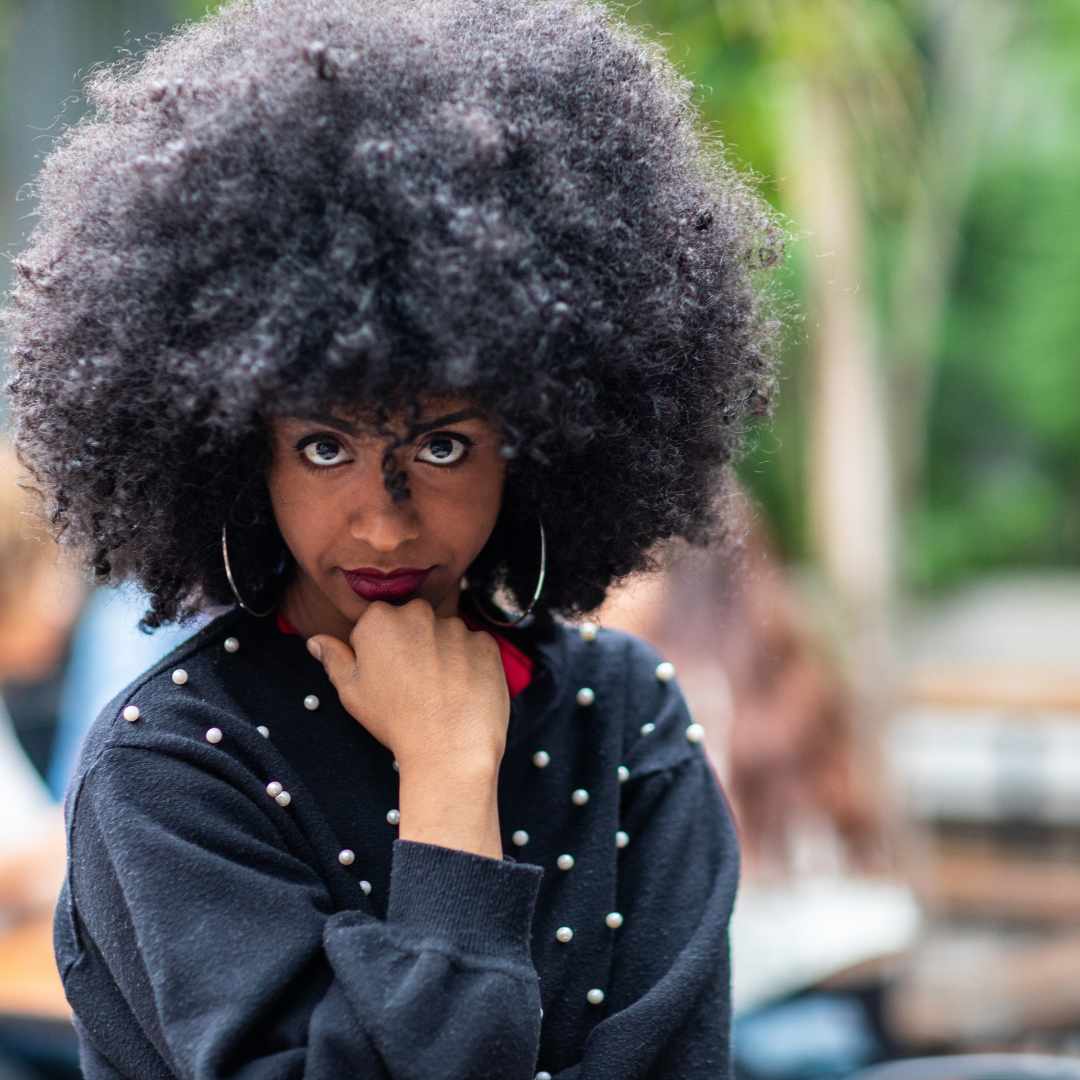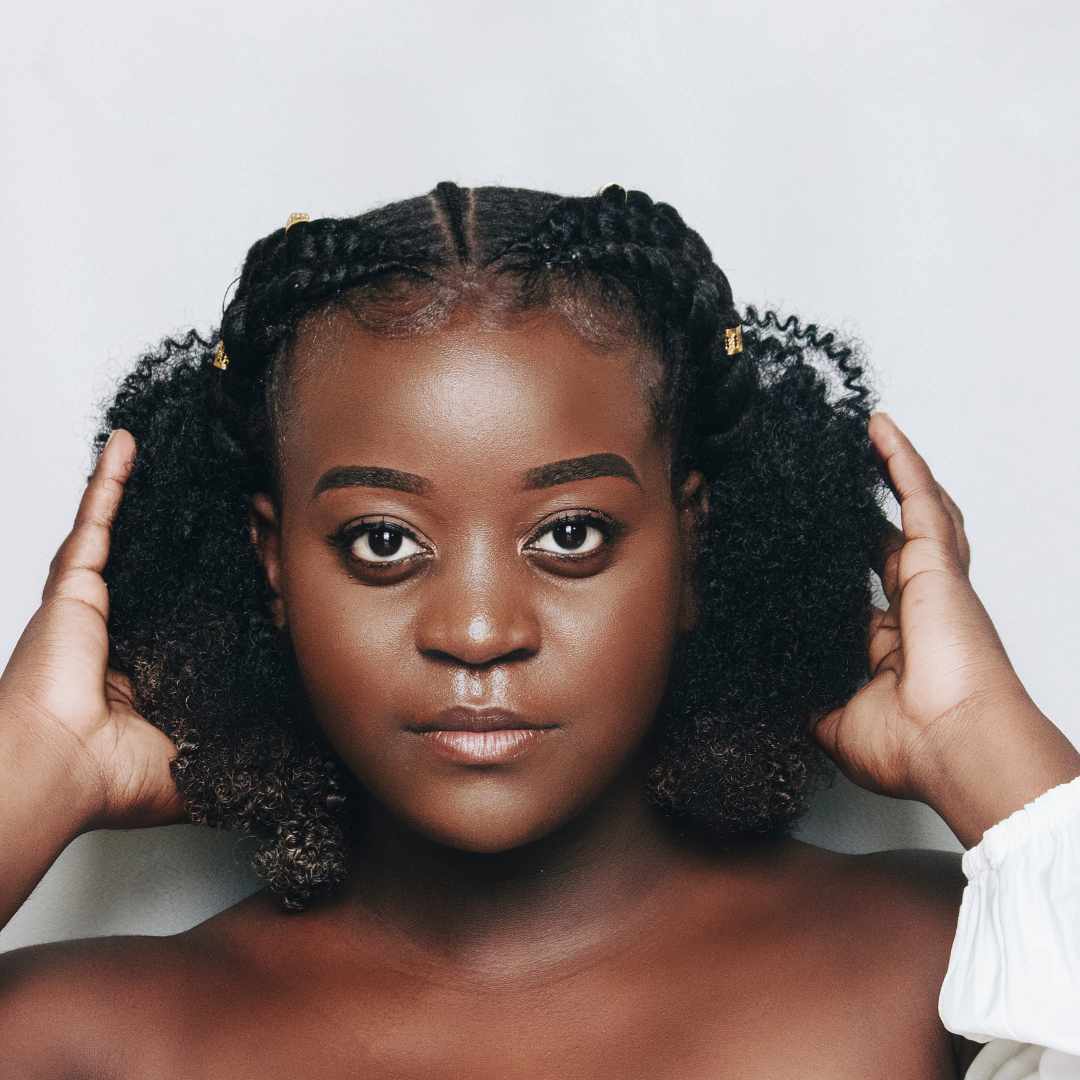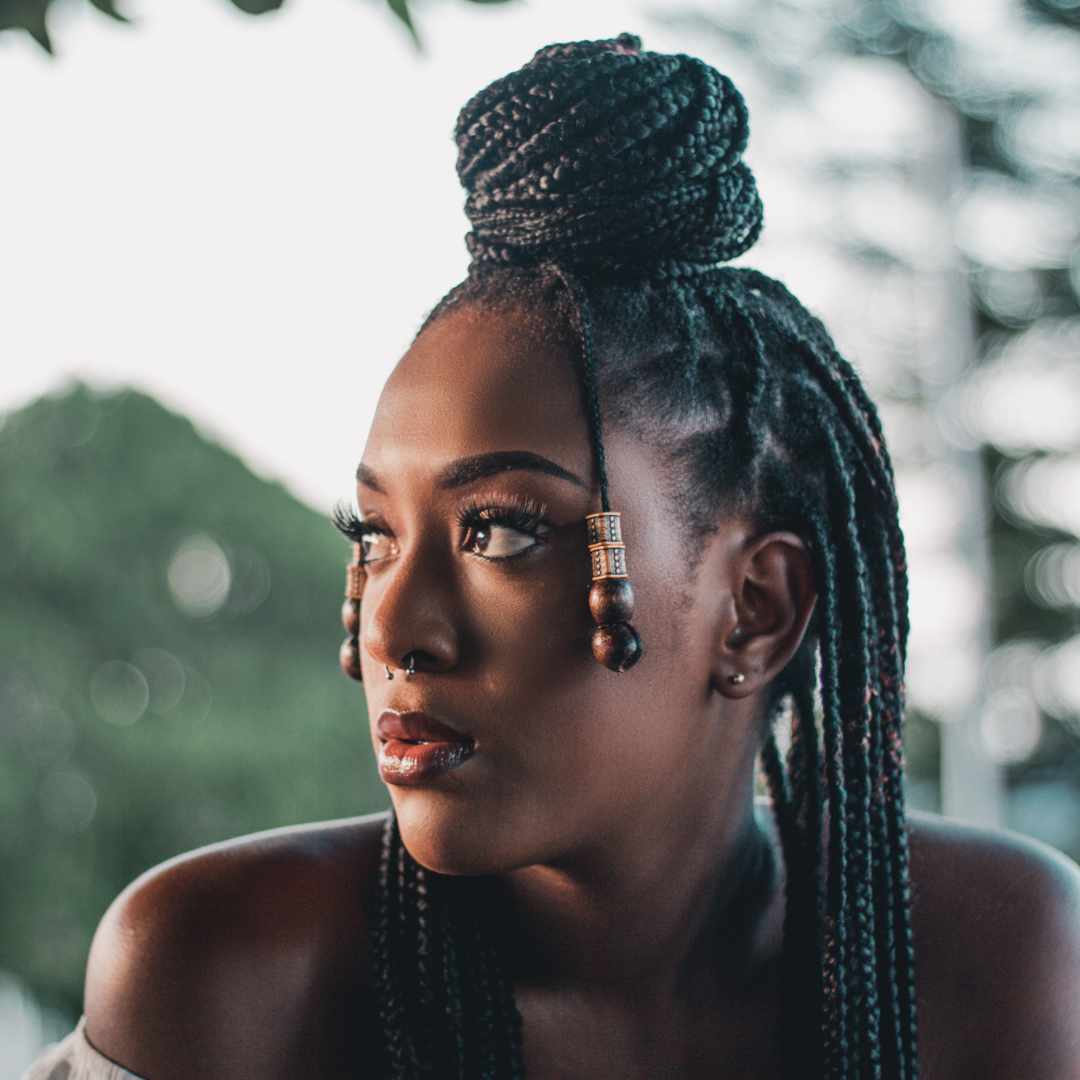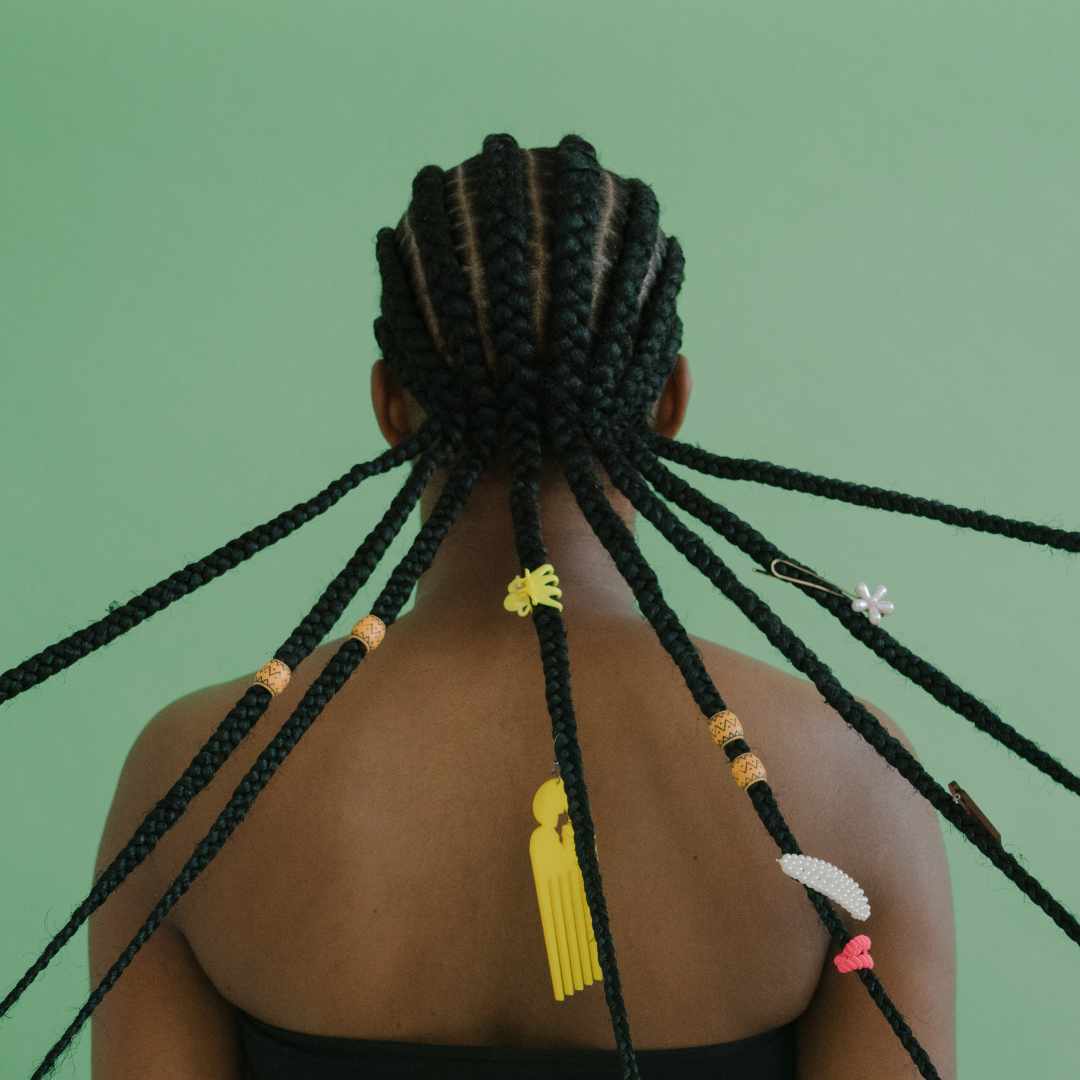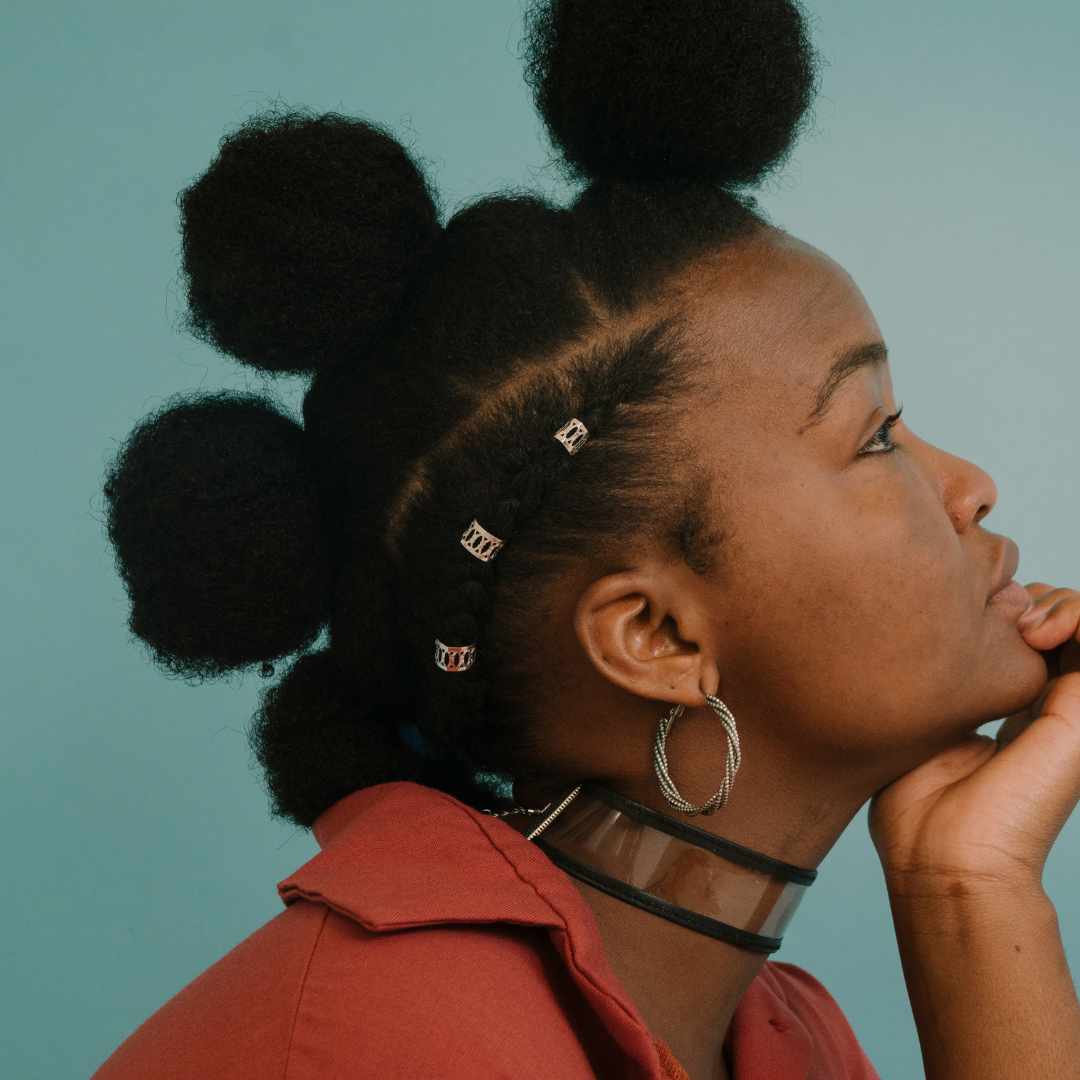How To Care For And Style Type 4C Hair
What exactly is Type 4C Hair?
Type 4C hair is the ultimate in tight curls. Boasting a super coily zig zag-pattern, these tight, springy curls are so compact and fine in texture that they create a dense, full-bodied look with a lot of natural volume.
💡 Not sure if Type 4 hair is your exact match? Or want to know which products are best for your unique hair type? Take our Hair Quiz to find out! Answer a few quick questions and get personalised recommendations tailored to your hair’s needs.
4C hair is the curliest of all the curly hair groups.
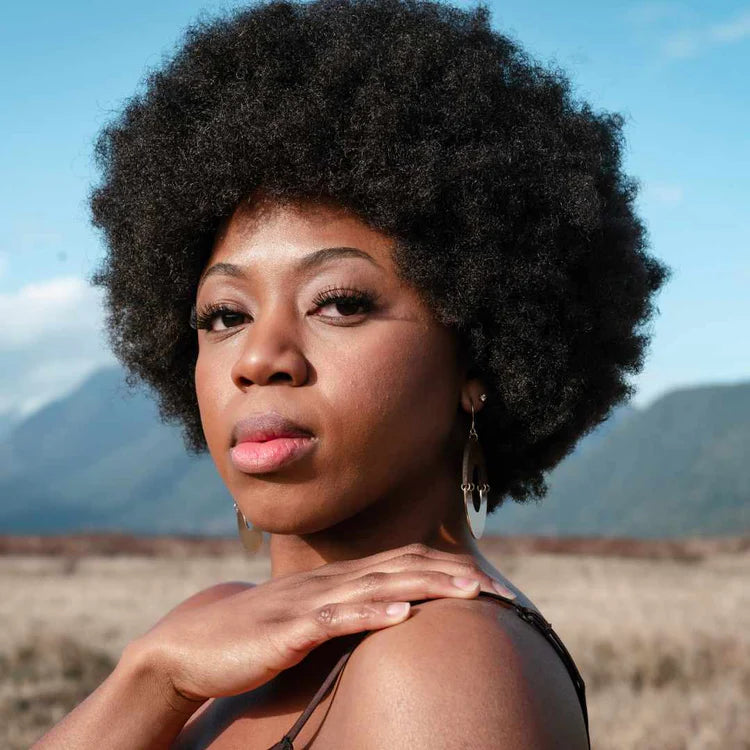
Do I have Type 4C Hair?
Identifying whether you have type 4C hair involves observing your hair's curl pattern, texture, and overall behaviour.
4C hair typically has tight kinks and coils.
They are prone to shrinkage. If your curls have a very tight zig-zag pattern right from the scalp and experience significant volume with minimal definition unless styled, you most likely have 4C hair.
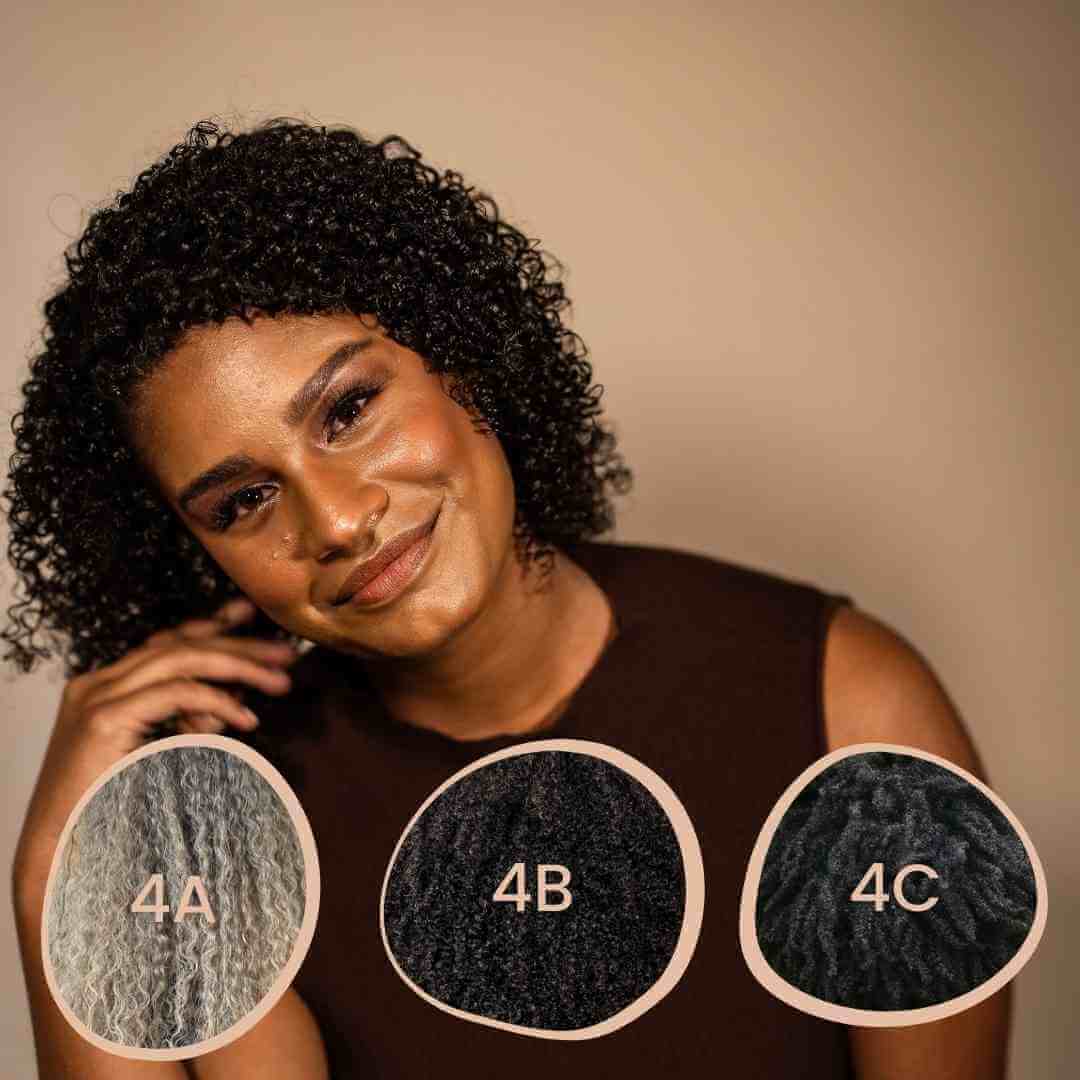
Identifying 4C Hair
To identify 4C hair, when in its natural state (unstyled and dry) look for a tightly coiled curl pattern that is less defined and ‘fuzzy’.
More prone to shrinkage (up to 90% of its actual length!!) The texture of 4C can range from fine and thin to wiry and thick. Additionally, 4C hair tends to be more delicate and requires gentle care to maintain its health.
- Your hair is dense.
- Your hair strands have a zig-zag pattern
- Your curls loop together so tightly that you can only see the strands when you’re up really close.
- Your natural hair rocks a ‘fro’ like no ones business
- When braided or ‘twisted out’ your hair stays put - type 4C hair is really versatile
- Breakage and shrinkage are unfortunately your biggest challenges
If this all sounds too familiar, you probably have 4C curls.

How is 4C different from other Type 4 Hair?
Type 4C hair is different from other type 4 hair categories mostly due to its tightness of coils and shrinkage level. It often has less natural definition and needs more moisture and protection to prevent breakage. Its densely packed coils make it the most fragile of the type 4 family.
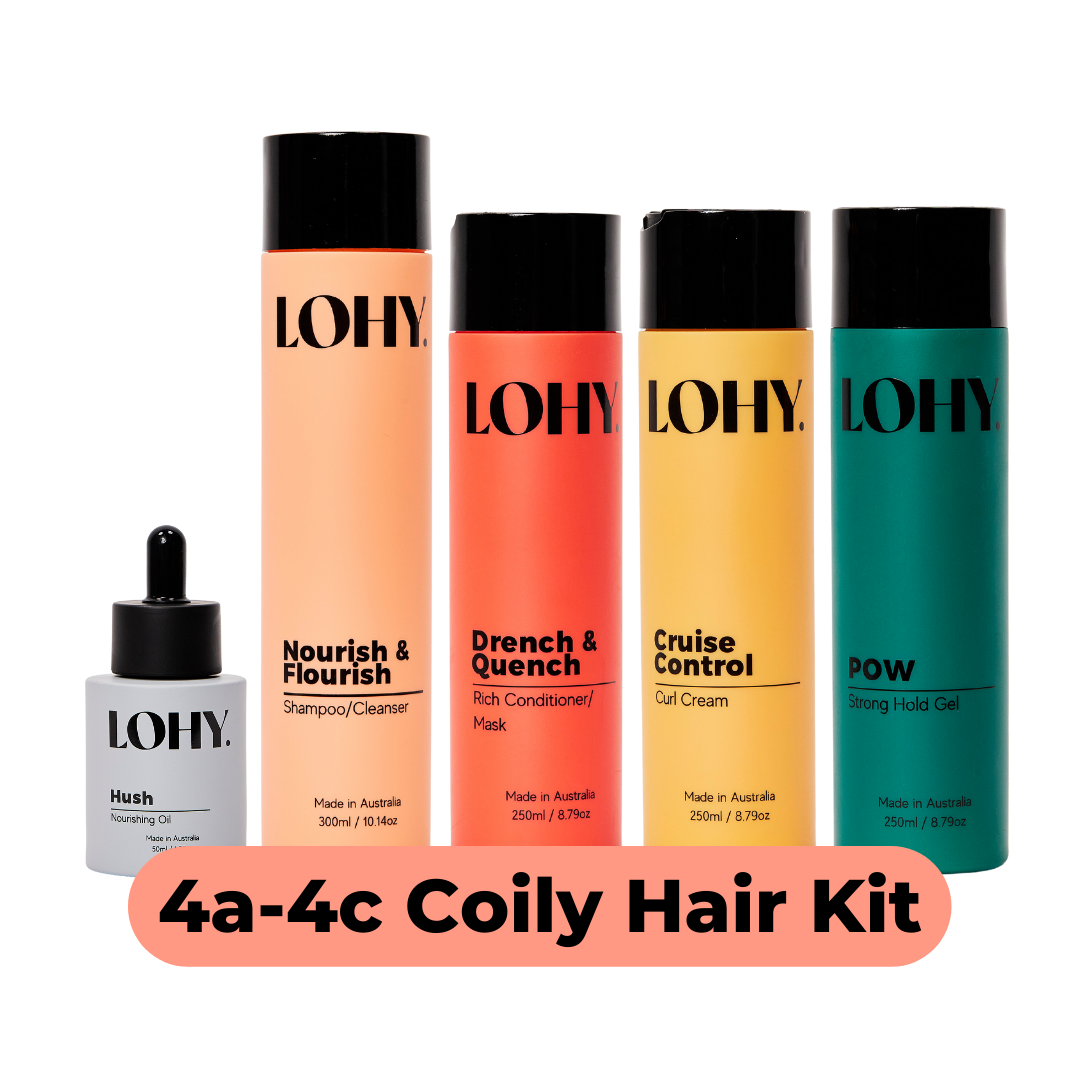
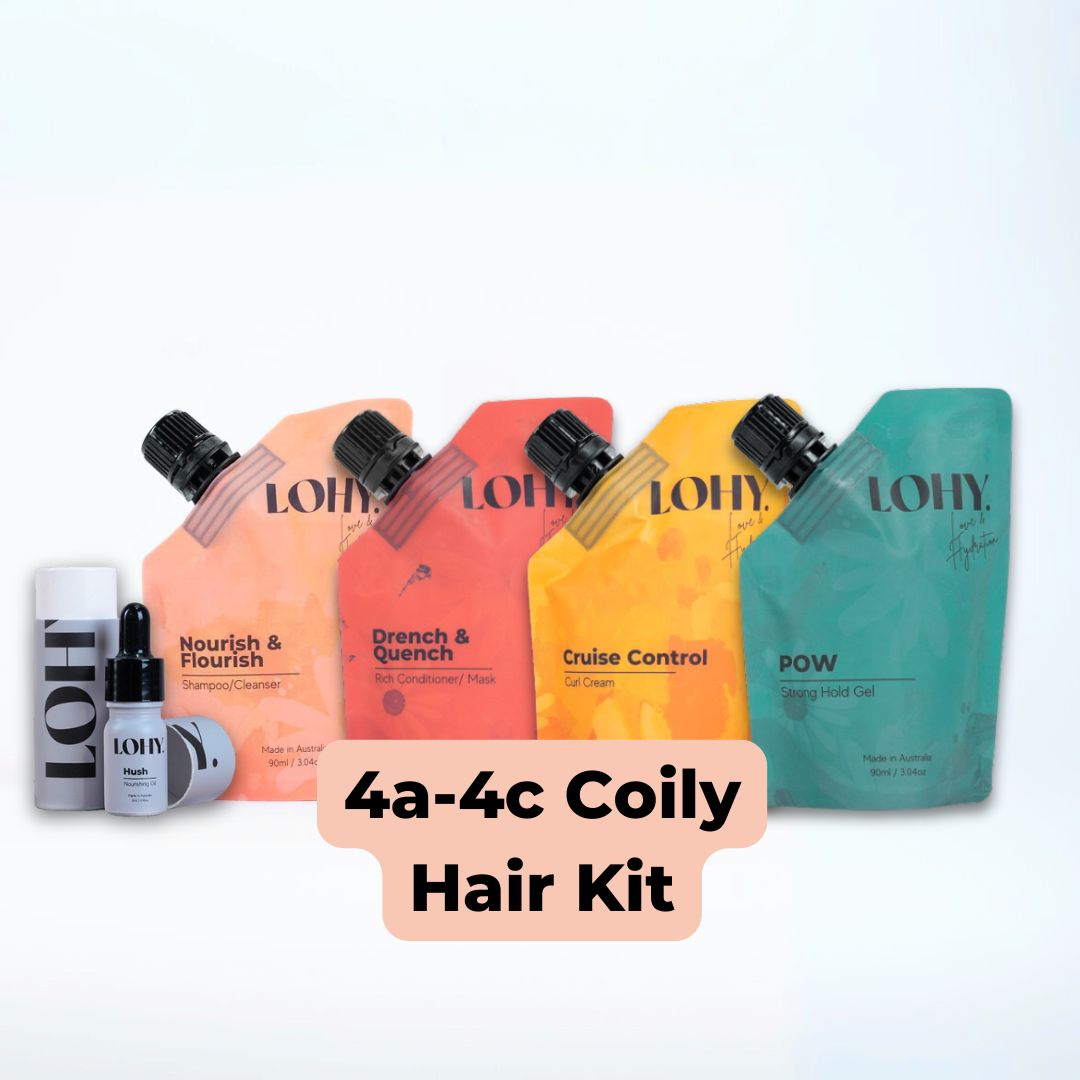
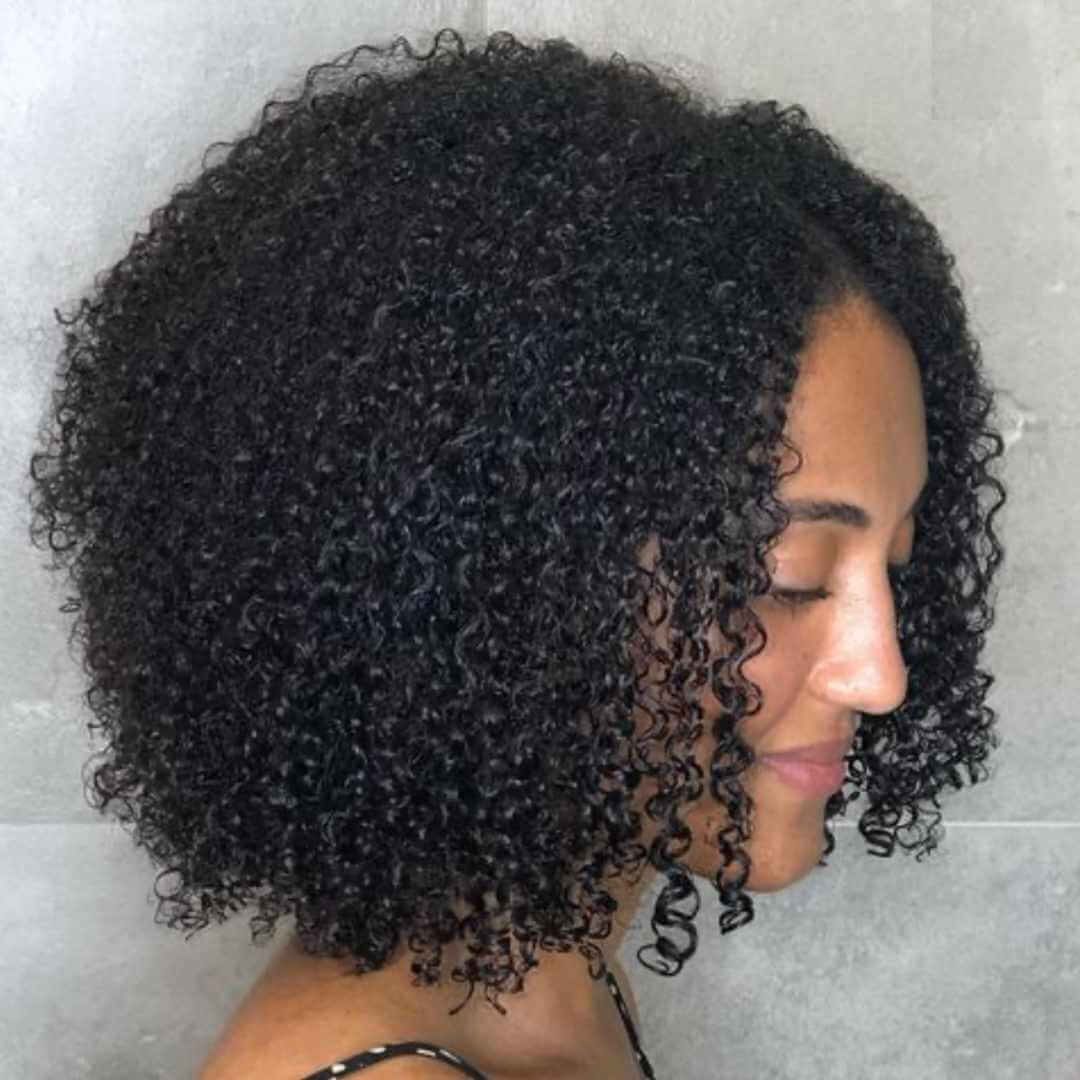
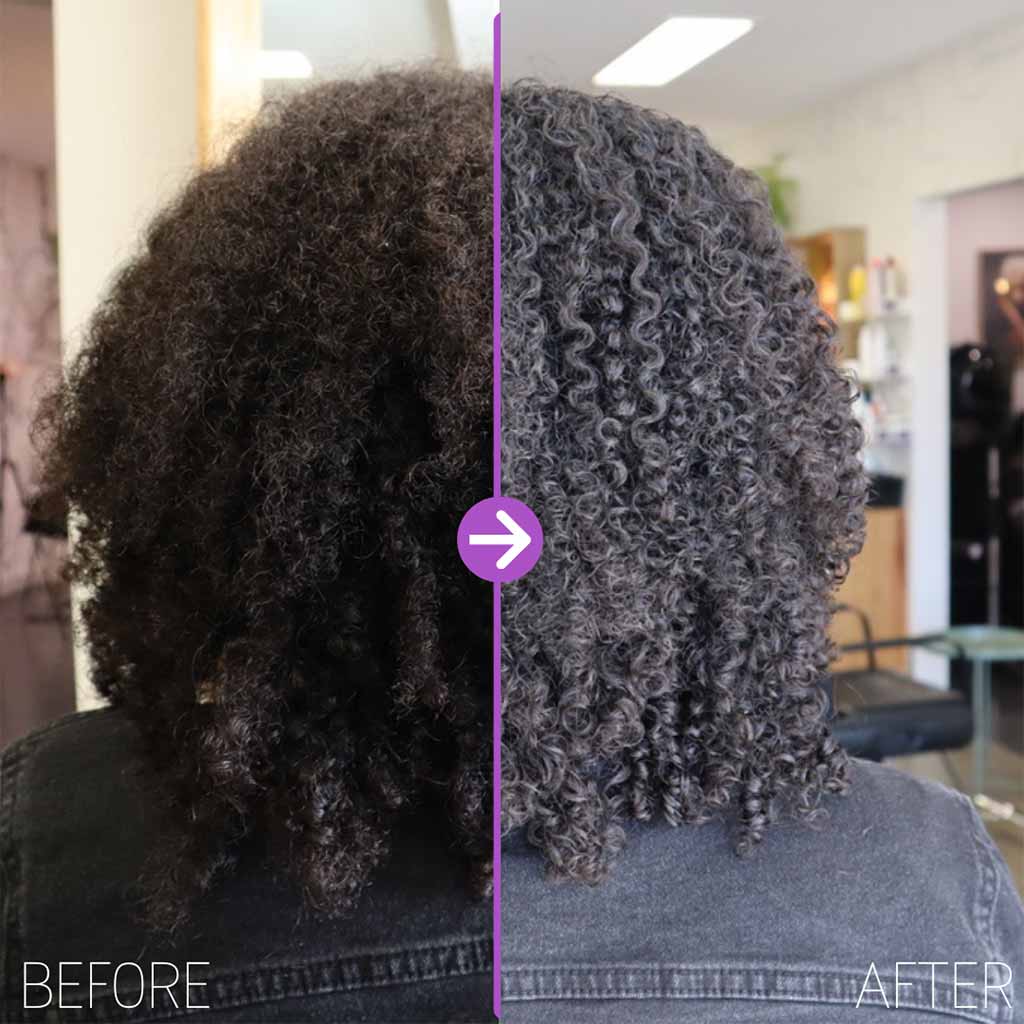
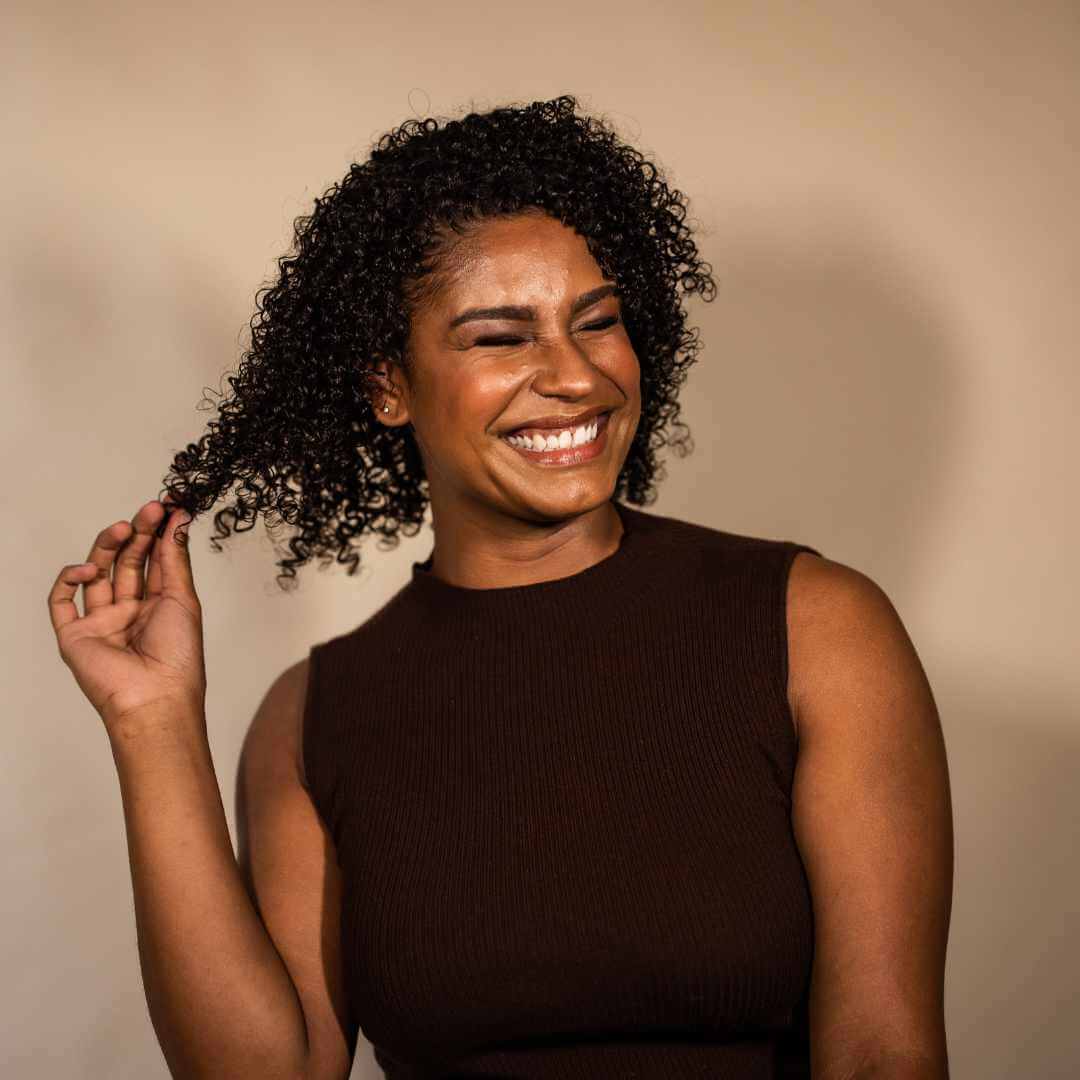
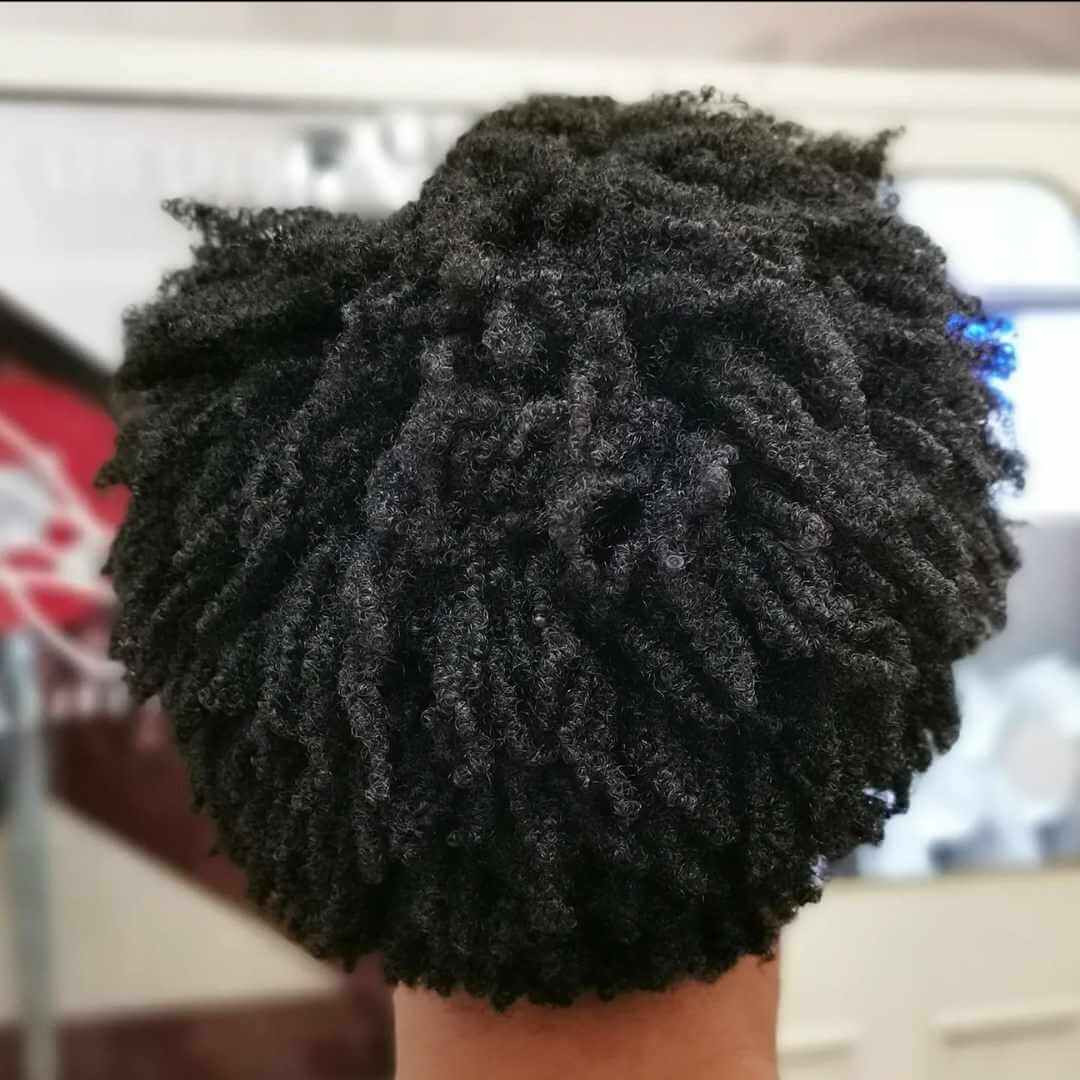
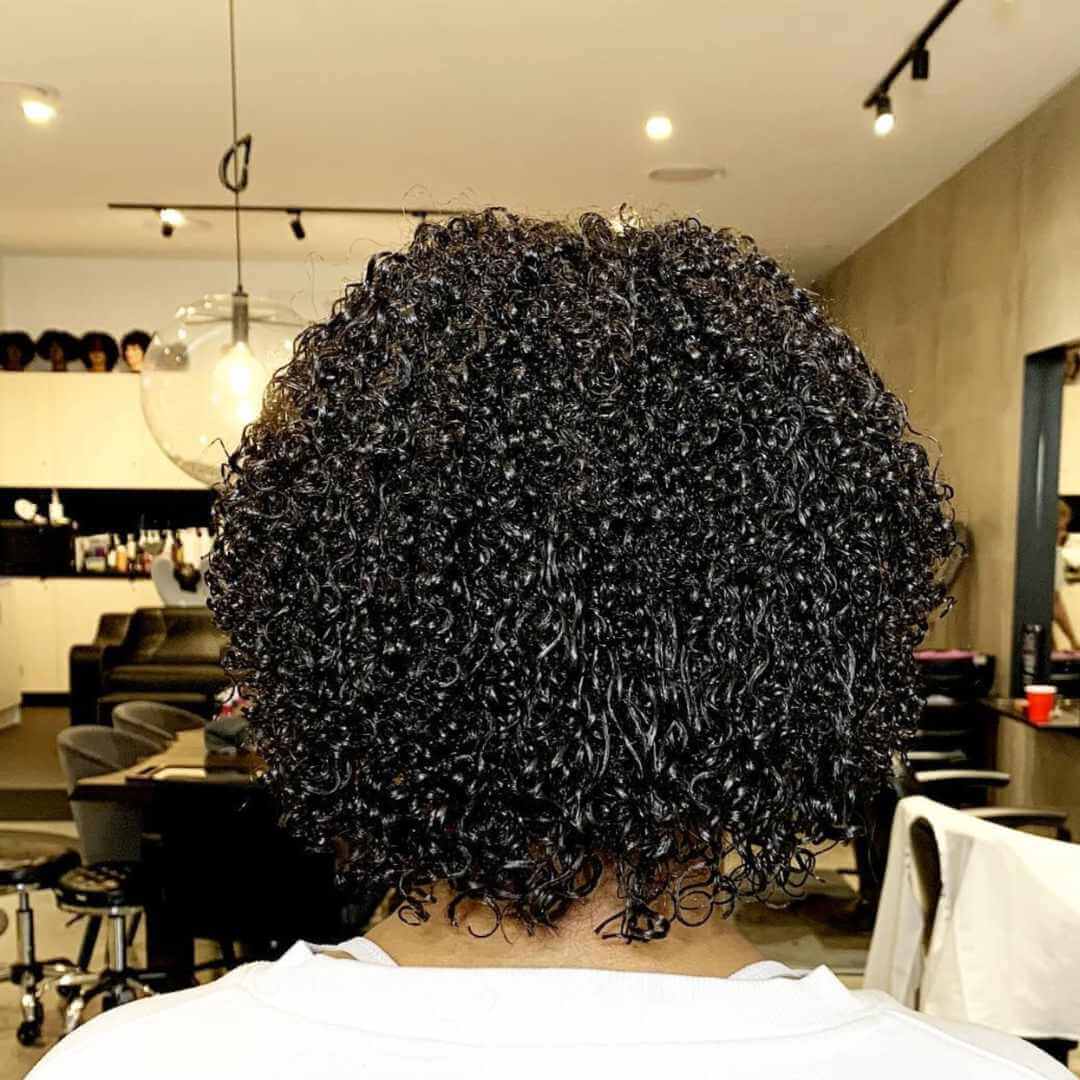
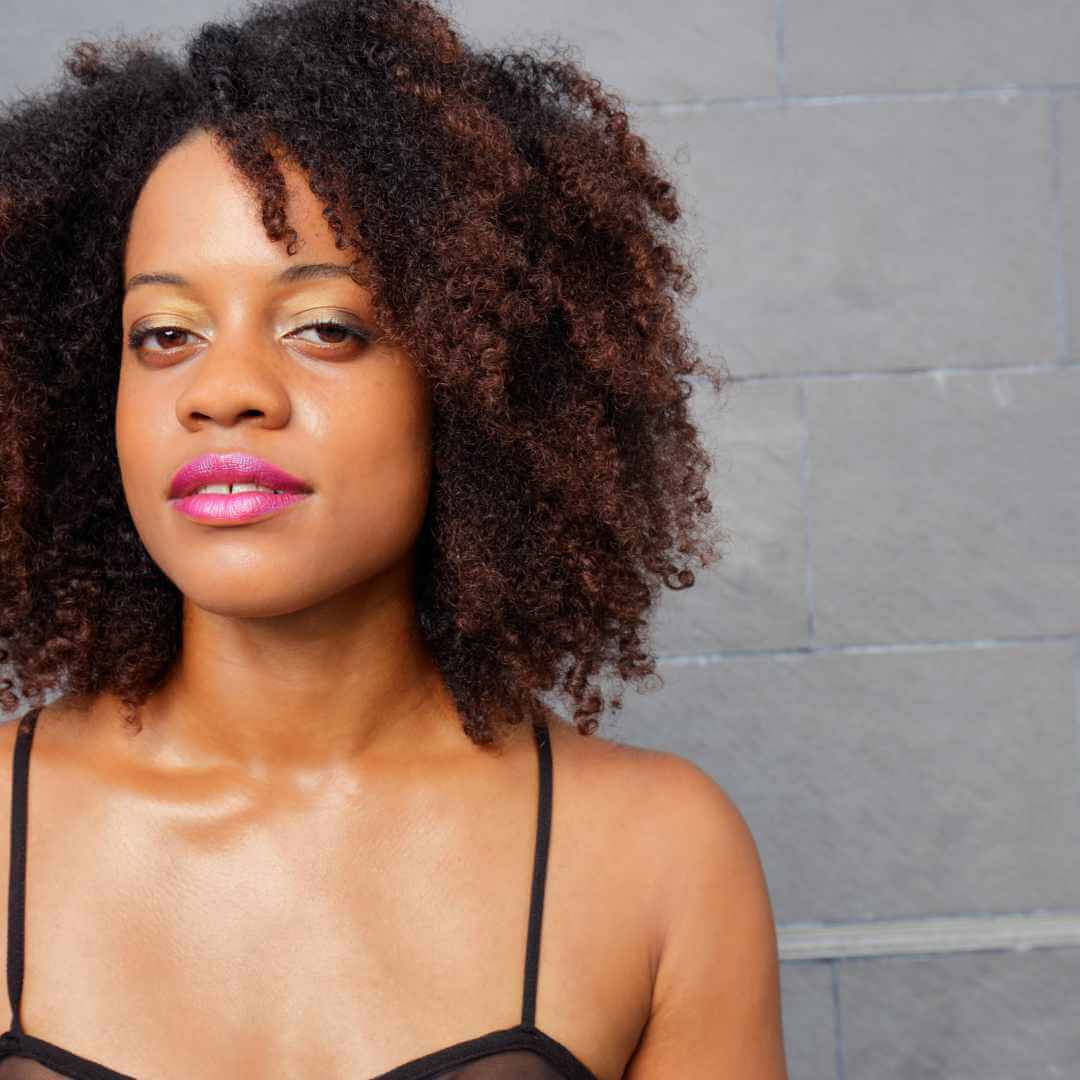
4a, 4b, 4c - Coily Hair Kit
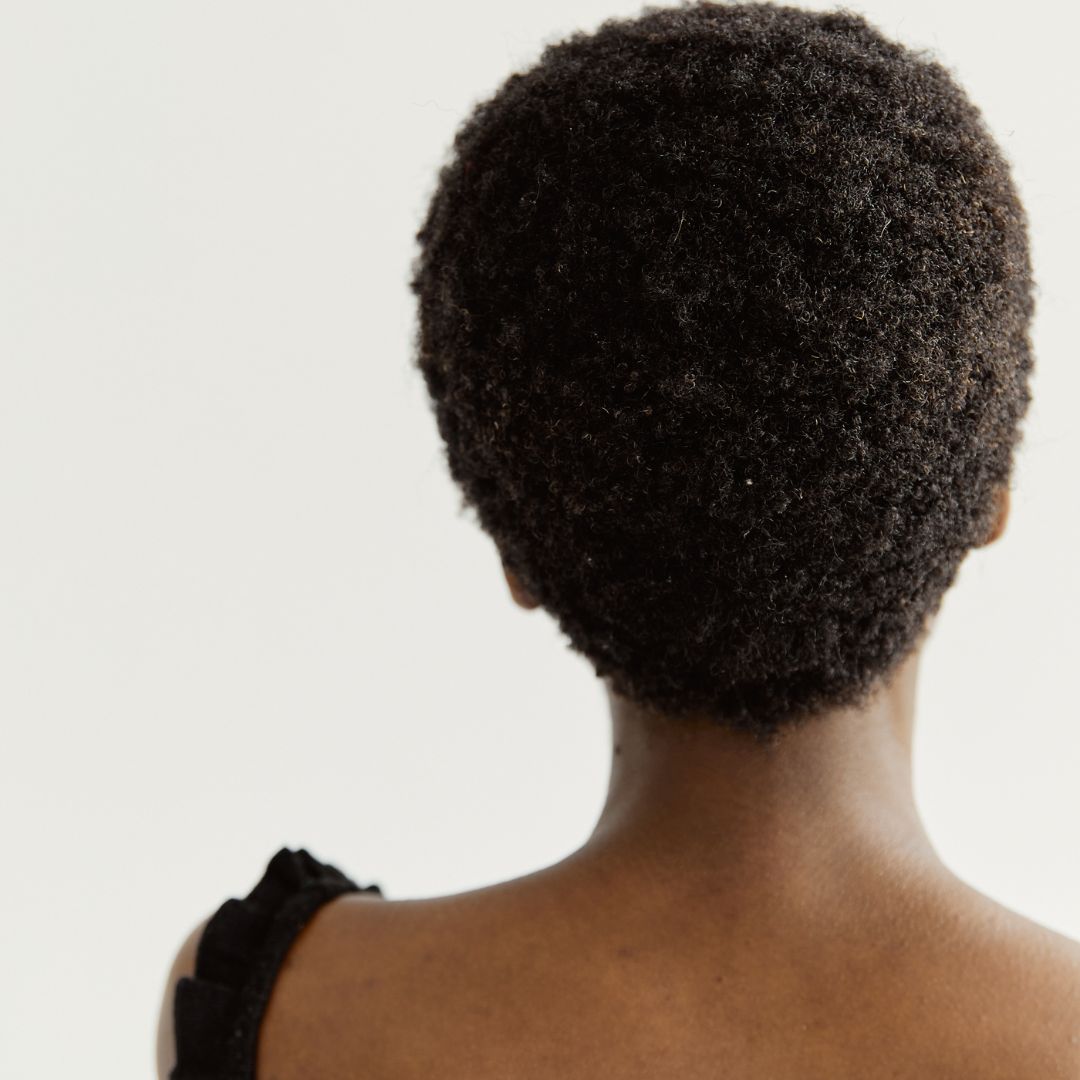
What is the Texture of 4C Hair?
The texture of 4C hair is often coarse or wiry, though it can vary from person to person. This Afro-textured hair exhibits a dense, full-bodied appearance and is distinct from the hairstyle known as a 'fro.
Hair Texture Simplified
Fine
This is the most delicate texture and tends to get oily quickly. Due to its composition of just two layers – the cuticle and cortex – products, especially heavy gels and creams can easily weigh it down. For optimal scalp health and to manage oil accumulation, it's recommended to wash fine hair every 2 to 4 days, as it is more susceptible to oil buildup.
Medium
A step thicker than fine hair, medium-textured hair boasts a more robust structure, sometimes consisting of a third layer. This enables it to hold hairstyles for long periods. To maintain the balance of natural oils and avoid dryness, washing every 4 to 5 days is ideal. In the interim, your scalp's natural sebum will keep your curls moisturised.
Thick
Boasting all three layers – the cortex, cuticle, and medulla – thick hair is robust and holds styles really well. And for long periods of time. While you can afford to use heat more liberally, keep in mind that it tends to take longer to dry. As thick hair excels at preserving moisture, washing it just once a week will suffice.
*Remember that whilst you can use more heat on thicker hair, on type 4 hair, that is often dryer than other hair types, It's not recommended.
Caring for Your Type 4C Hair
Washing your 4C hair is crucial for maintaining its health. Characterised by its tightly coiled "Z" shaped pattern, 4C hair can be voluminous and a bit of a showstopper when cared for correctly. However, due to its delicate nature and propensity towards dryness, it requires a unique approach to washing.
Here are some guidelines to help you cleanse your 4C hair effectively without stripping it of its natural oils.
Wash Less
The natural texture of 4C hair does not allow scalp oils to travel down the hair shaft as quickly as they do in straighter hair types. This means that your hair might not get oily quickly and doesn't require daily washing. (who doesn't love that!) Over-washing can lead to further dryness and breakage.
Frequency: Aim to wash your 4C hair once every 7-10 days. If you find that your scalp is not overly oily or that your hair does not have significant product buildup, extending this period a bit longer might be beneficial.
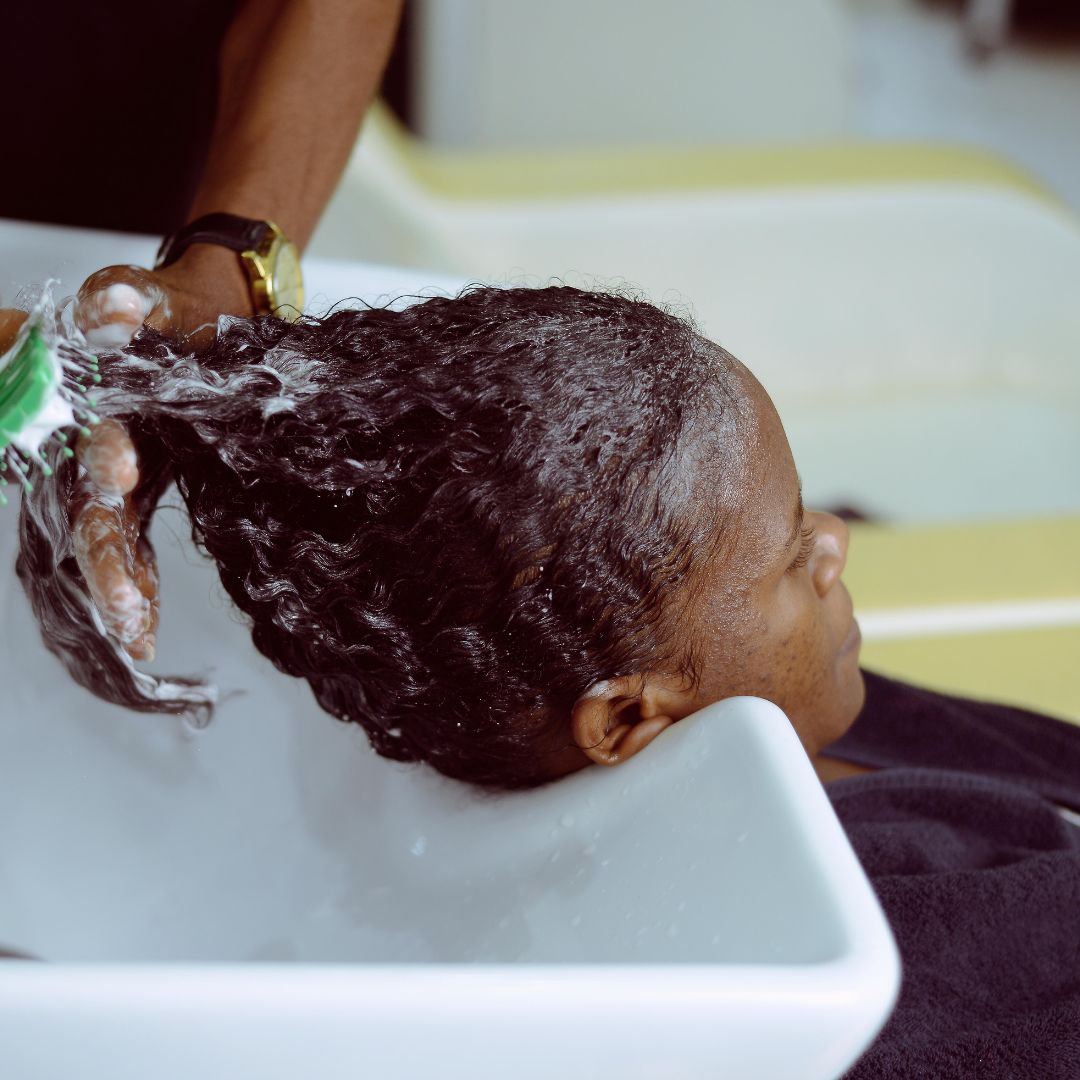
Pre-Poo
Pre-pooing is a technique used to prep your hair before shampooing. It's particularly good for Type 4, as it helps to retain moisture. It involves applying an oil or a conditioner to your hair prior to washing to reduce the likelihood of moisture being stripped away by shampoos.
Steps:
- Select a Pre-Poo Product: Hush Nourishing Oil with its unique blend of Rosehip and Jojoba oils is perfect for a pre-poo treatment. Or Drench and Quench deep conditioning treatment.
- Apply: Section your hair and apply the product thoroughly from roots to ends.
- Detangle: Gently detangle each section with a Flexi Brush, wide-tooth comb or your fingers to minimise breakage.
- Let It Sit: Allow the pre-poo to sit on your hair for at least 30 minutes; some prefer to leave it on for a few hours or even overnight.
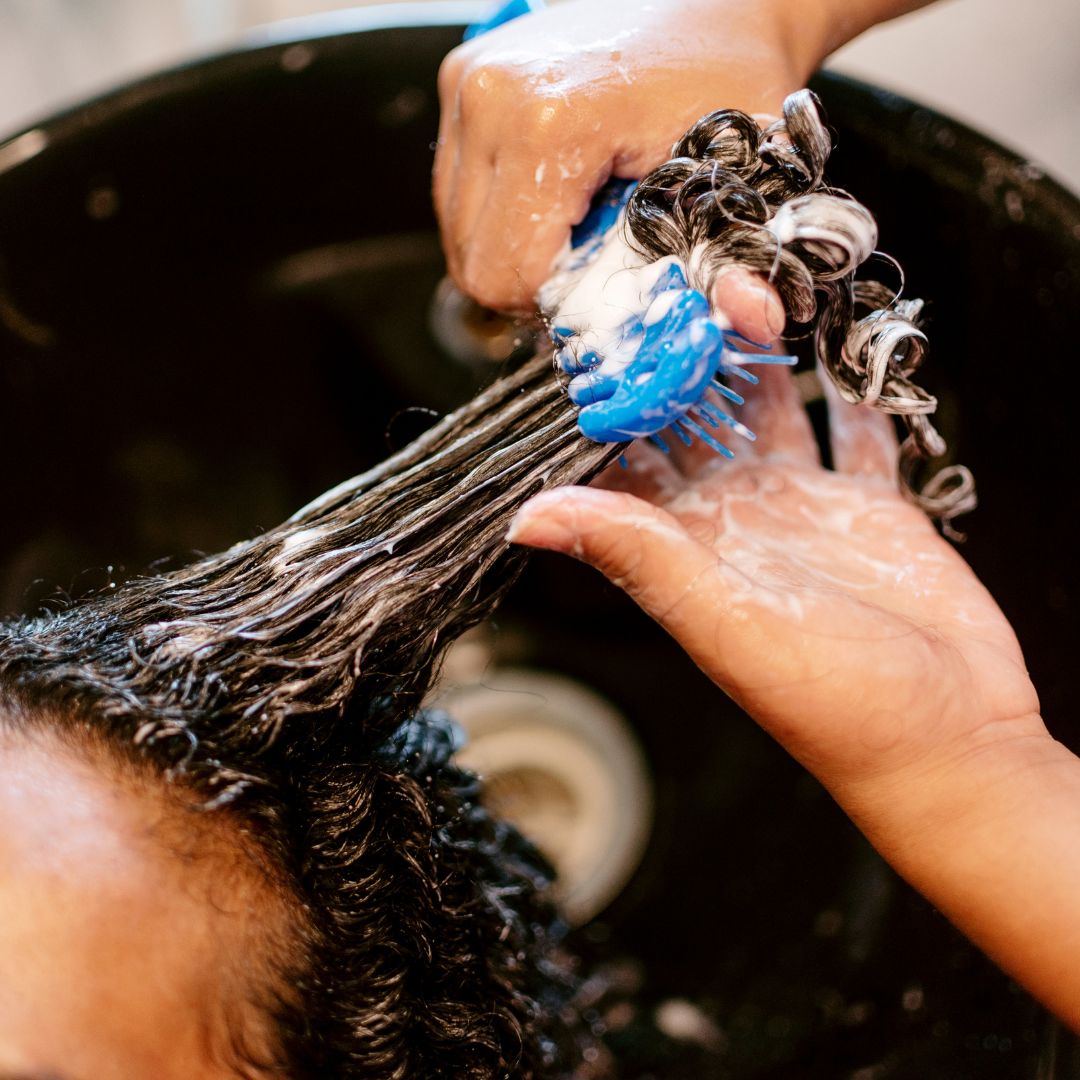
Wash in Sections
To prevent tangling and make the washing process easier, you can wash your hair in sections. This method helps to ensure that each part of your scalp and hair gets thoroughly cleaned without causing unnecessary tangles and knots.
Method:
- 1. Section Your Hair: Divide your hair into 4-8 sections, depending on the thickness and length of your hair.
- 2. Secure the Sections: Twist or braid each section to keep them separated and secure them with clips or hair ties.
- 3. Wash One at a Time: Release each section one at a time and gently massage the scalp with the pads of your fingers. Apply shampoo primarily to the scalp rather than the full length of the hair.
- 4. Rinse Thoroughly: After washing a section, rinse out the shampoo completely before moving on to the next.
- 5. Condition: Apply a hydrating conditioner to each section, focusing on the ends, and then detangle again if necessary. Rinse with cool water to seal the hair cuticles and enhance shine.
By incorporating these methods into your hair care routine, you can maintain your 4C hair’s health and keep it looking its best. Remember that every head of hair is different, so feel free to adjust these guidelines to suit the specific needs of your hair and scalp.
Moisturising + Hydrating Your 4B Hair
Maintaining moisture is paramount when it comes to 4B hair care. Given its coily nature, 4B hair needs extra care and attention to prevent damage. Hydration and moisturising treatments can help maintain the elasticity and strength of your hair, promoting growth and preventing damage.
Two essential treatments that can keep your 4B hair well-nourished and vibrant:
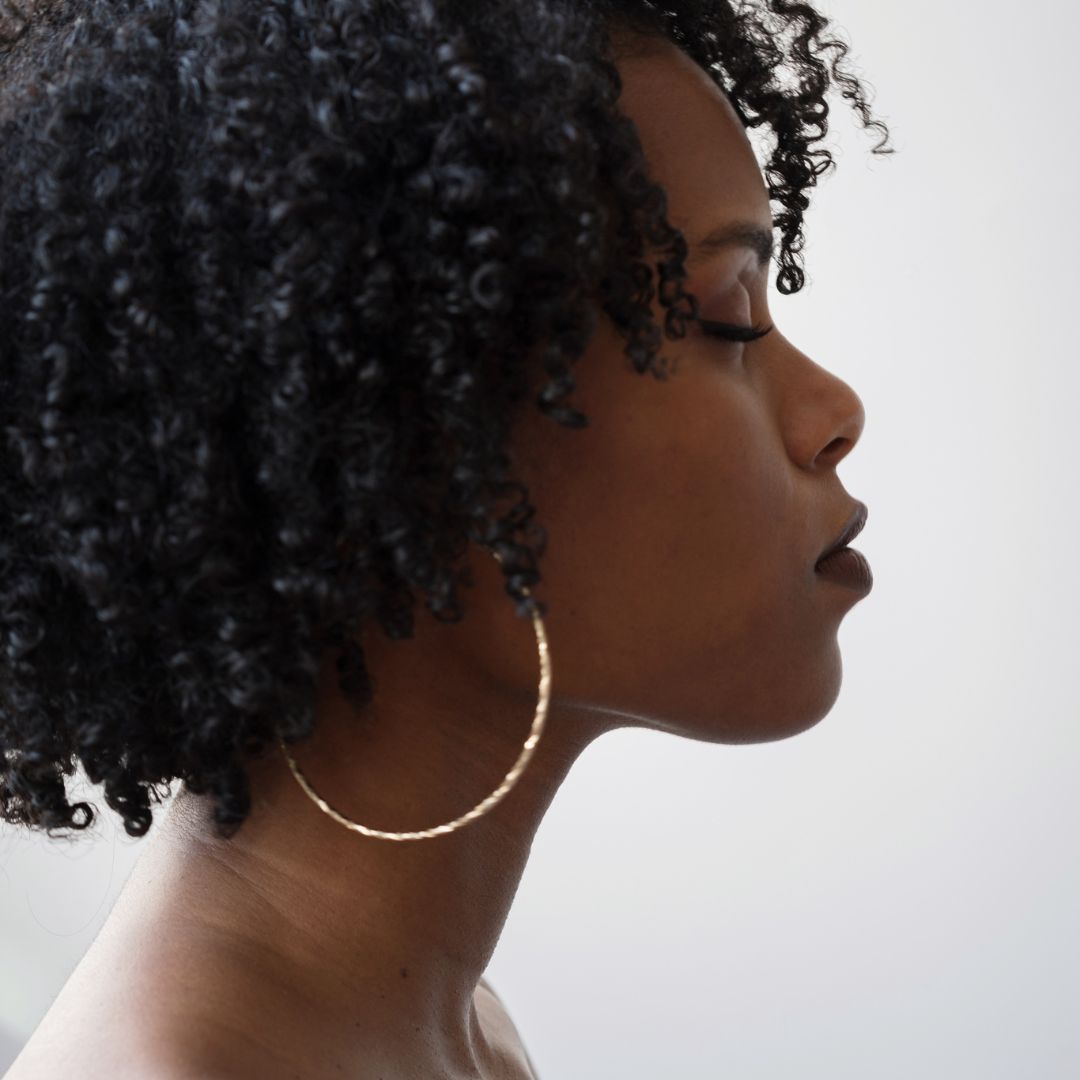
Deep Conditioning Treatments
Deep conditioning treatments provide intense hydration and deliver essential nutrients to each strand.
How to Use Deep Conditioners:
- Frequency: Incorporate a deep conditioning treatment into your hair care routine once a week or bi-weekly, depending on your hair’s level of dryness.
- Application: After shampooing, apply a generous amount of deep conditioner to your hair. Use a wide-tooth comb or your fingers to distribute the conditioner evenly.
- Absorption: For maximum penetration of the product, cover your hair with a plastic cap or microfibre towel.
- Rinse: Rinse the deep conditioner out with cool water to close the hair cuticles and lock in moisture.
Benefits:
- Restores Moisture: Deep conditioning treatments replenish moisture that is lost due to environmental factors and styling products.
- Improves Texture: Regular deep conditioning can improve the texture of your hair, making it softer and easier to manage.
- Enhances Elasticity: These treatments can increase the elasticity of your hair, reducing the risk of breakage during styling.
Adds Shine: Deep conditioners often leave hair looking lustrous and feeling silky.

The Benefits of Oil Treatments
Oil treatments can be a game-changer for 4B hair by sealing in moisture and adding an extra layer of protection.
Types of Oils to Use:
Our #1 recommendation is, (of course!) our Hush Nourishing oil. It has a selection of natural oils, including Jojoba and Rosehip + it is filled with loads of extra nourishing ingredients. If you prefer to opt for a straight oil, here are our suggestions.
- Coconut Oil: Penetrates the hair shaft to condition and improve hair health.
- Olive Oil: Rich in antioxidants, it helps to maintain scalp health and prevent damage.
- Jojoba Oil: Closely mimics the natural oils produced by the scalp, making it an excellent choice for sealing moisture.
How to Use Oils:
- Pre-Poo Treatment: Apply oil or deep conditioner to your hair before washing to protect against shampoo that can strip away natural oils.
- Sealing Moisture: After washing and conditioning your hair, apply a small amount of oil to seal in the moisture.
- Warm Oil Treatments: Once a month, use a slightly warmed oil to massage your scalp and hair before shampooing. This can help in improving blood circulation and deeply moisturising the hair shaft.
Benefits:
- Seals Moisture: Oils form a protective barrier on the hair shaft to lock in moisture that the hair has absorbed.
- Promotes Hair Health: Many oils have vitamins and fatty acids that help nourish the scalp and strands.
- Enhances Shine: Regular oil treatments can give your hair a healthy sheen.
- Prevents Breakage: By maintaining elasticity, oils help reduce the likelihood of hair breakage.
Together, deep conditioning and oil treatments can significantly contribute to the overall health of your 4B hair. By consistently incorporating these methods into your hair care regimen, you can keep your curls and coils quenched, resilient, and ready to withstand styling and environmental challenges.
4 Essential Care Tips for 4C Hair
Avoid Chemicals
Type 4C hair is especially susceptible to damage from chemicals due to its delicate structure and curl pattern. To maintain its health and vitality, it's important to steer clear of harsh chemicals found in relaxers, texturizers, and some hair dyes (especially cheap box hair dyes). These can lead to breakage, dryness, and damage to the hair's natural curl. Instead, opt for natural products and alternatives that maintain the integrity of your 4C curls.
Styling + Care
When it comes to styling 4C hair, the key is to use techniques that minimise stress on the hair. Opt for low-manipulation styles that don't require constant combing, brushing, or pulling. Use soft hair ties and clips that won't snag or break the hair. Regularly incorporate moisturising products and oils to keep the hair supple and easy to style.
Looking After Your Protective Styles
Protective styles are a mainstay for 4C hair as they tuck away the ends of hair to prevent split ends and breakage. To care for your hair while in protective styles, continue to moisturise your scalp and hair with light oils, creams or hydrating sprays. It's also important not to leave protective styles in for too long as tension and lack of washing can lead to damage and product build up.
STYLES AND HAIRCUTS FOR TYPE 4C HAIR
Embrace hairstyles that protect your ends and maintain moisture. Consider cuts that work with your hair's natural volume and density, allowing for both expression and manageability.
STYLES AND HAIRCUTS FOR TYPE 4C HAIR
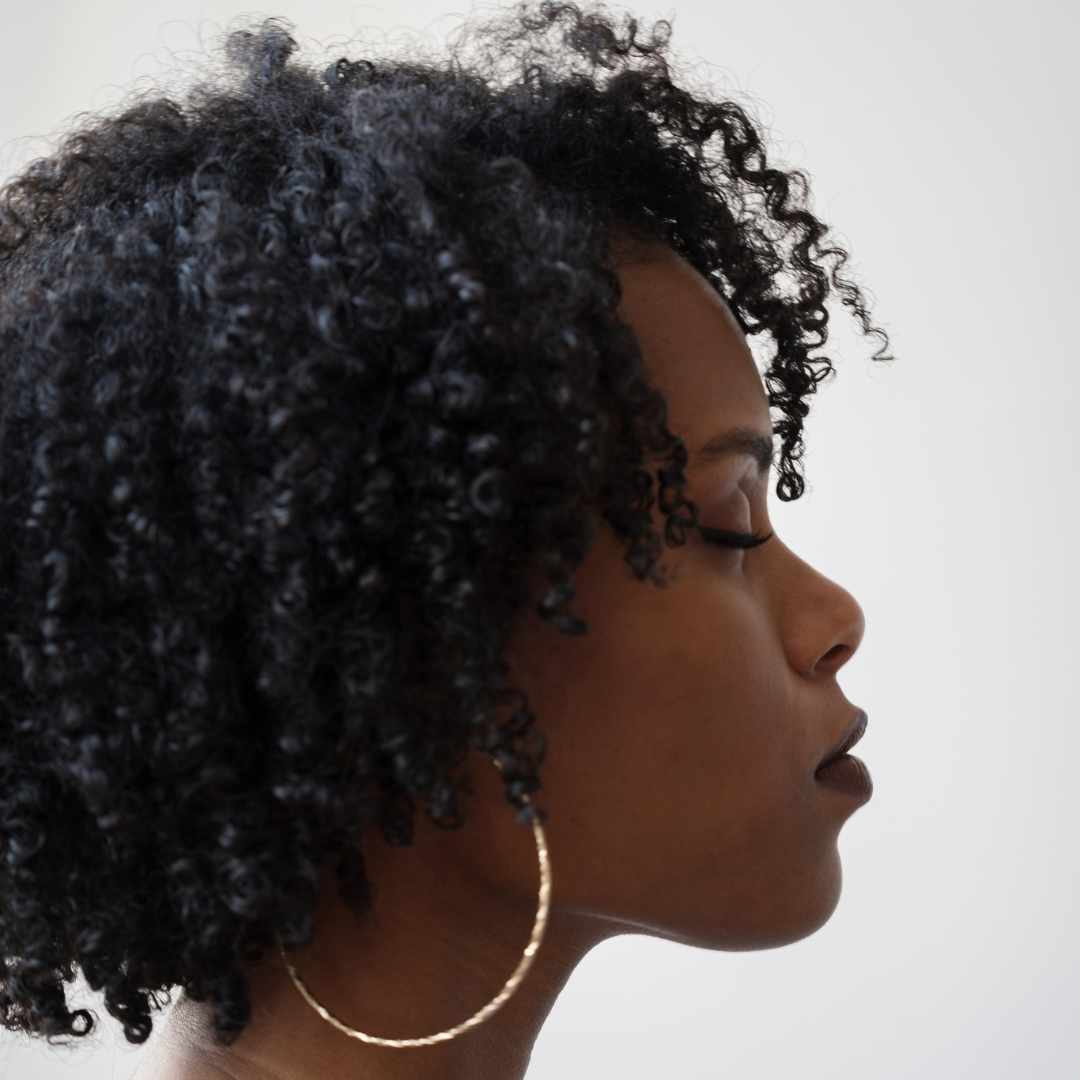
The Classic Wash and Go
For those days when simplicity is your style mantra, embrace a traditional wash-and-go. This easy approach, particularly chic with a TWA (Teeny Weeny Afro), allows you to showcase your hair's natural texture. Just ensure you apply a leave-in moisturiser to nurture your strands before stepping out.
NURTURE YOUR 4C CURLS WITH LOHY
At LOHY, we're dedicated to providing tailored solutions for the unique needs of 4C hair, supporting your journey to vibrant and resilient curls. For more information on products, accessories or curl education, reach out to us and one of our friendly team will be in touch!
Play around with treatments and styles tailored to your unique hair type. Once you've mastered your preferred routine and go-to styles, don't stop there!
With the help of LOHY’s meticulously formulated products, grounded in scientific research and designed to uplift every curly strand, curly hair care has never been easier.
Prioritising the health of your hair, our products are infused with organic and hydrating ingredients like Primrose, Macadamia and Jojoba Oils to nourish and fortify your curls.
LOHY makes loving your curls easy!
FAQs for Type 4C Hair
How often should I wash my 4C hair?
Type 4C hair typically benefits from less frequent washing to prevent it from becoming too dry. Generally, washing every 1 to 2 weeks is recommended. However, this can vary based on your lifestyle, scalp health, and the products you use. Listen to your hair’s needs and adjust accordingly.
What are the best ways to moisturise 4C hair?
Moisturising 4C hair involves regular use of water-based products followed by oils or butters to seal in the moisture. Deep conditioning treatments every week, using leave-in conditioners, and layering with a sealant like shea butter or castor oil are great practices. Also, drinking plenty of water and maintaining a healthy diet contribute to overall hair hydration.
Can I use heat on my 4C hair?
While you can use heat on 4C hair, it’s important to do so sparingly and always with a heat protectant to minimise damage. Because 4C hair is prone to dryness and breakage, frequent heat use can exacerbate these issues. Opt for low heat settings and consider heat-free styling options whenever possible.
What are the best protective styles for 4C hair?
Protective styles for 4C hair include twists, braids, bantu knots, and cornrows. These styles tuck away the ends of your hair and minimise manipulation, helping to protect your hair from breakage and retain length. It's important to not install them too tightly and to continue moisturising your hair even while it's styled.
Why is my 4C hair always dry?
Type 4C hair may often feel dry because its tight coils can make it difficult for scalp oils to travel down the hair shaft. To combat dryness, incorporate regular deep conditioning, use a daily moisturiser or spritz, and seal in moisture with oils. Also, ensure that you’re protecting your hair from the elements and not over-cleansing it.
How can I define my 4C curls?
Defining 4C curls can be achieved through techniques like finger coiling, twist-outs, or braid-outs. Using styling gels or creams can also aid in curl definition. Remember, each head of hair is unique, so curl definition will vary from person to person.
What ingredients should I look for in products for 4C hair?
Look for products that are rich in hydrating ingredients like aloe vera, glycerin, honey, and natural oils such as coconut oil, rosehip, and jojoba oil. Additionally, ingredients that strengthen hair, like protein, can be beneficial when used in moderation. Avoid harsh sulphates, parabens, and mineral oils that can strip or weigh down your hair.
